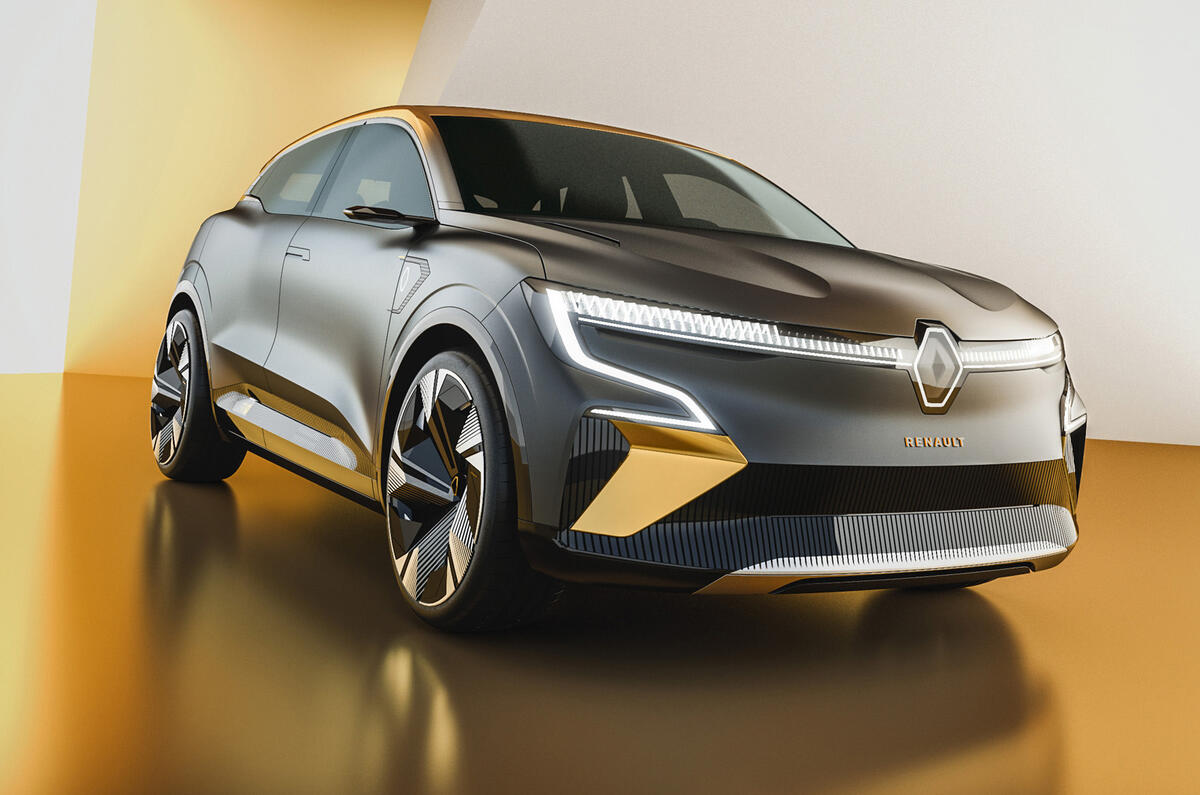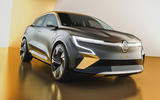Renault has revealed the Mégane eVision, a bold electric concept that it claims “reinvents the classical hatchback” and closely previews a final car due to go into production at the end of 2021.
When it arrives it will not immediately replace the Megane, with the firm revealing a combustion-engined Megane (likely an updated version of today's model) will remain on sale for some time after the EV's launch.
Although it takes its name from Renault’s long-running Ford Focus rival, the concept is an all-new design built on the Renault-Nissan-Mitsubishi Alliance’s electric CMF-EV platform, which is also used for the Nissan Ariya large SUV.
The Mégane eVision appears to share several styling features with the Ariya, but its design is heavily based on the recent Renault Morphoz concept. New Renault boss Luca de Meo commented at the model's reveal today: "The car looks very futuristic but it is 95% what the production car will look like."
De Meo said the company “fully leveraged the potential of a pure-electric platform to reinvent the classical hatchback in an emotional way”. He continued: “The Mégane eVision reinvents the Mégane and Renault reinvents Renault. This is just the beginning; a whole new generation of innovation-packed EVs is to come. A family of vehicles will be based on the CMF-EV platform - to date more than 300 patents have been filed."
The Mégane eVision features what Renault terms ‘slimline’ batteries, which are built into the structure of the CMF-EV platform. As is standard for an EV, the batteries are mounted under the floor. De Meo said the batteries are 11cm high, claiming this makes them "the flattest in the market". He added: "It allows us to give [the concept] a sporty look and achieve very competitive aerodynamics."





























Join the debate
Add your comment
Stunning
Considering Luca de Meo confirmed yesterday that this is 95% of the production car I think this is quite an achievement. Ok it will lose its cameras and get proper mirrors, wheels a bit smaller but the basic shape will stay.
That bland and sad looking VW ID3 already seems completely outdated a few weeks after its introduction...
This is a 63kWh battery
Renault quote usable battery, while Nissan and Peugeot for example quote total capacity. For example the Leaf 40 has 36kWh usable and the Zoe 50 has a 52kWh total. That's why this looks so much more efficient than the Nissan (apart from size and weight obvs). I wish all the manufacturers would agree on one approach and follow it. Renault's seems the most honest, if not the most commercial.
Renault has given us
Renault has given us interesting concept (and production) cars but this is not it.
This one reads as if details were added to the bodywork after the overall shape had been finalised.
The 'muscular' bulge above the rear wheelarch has become such a design cliche that there is no longer anything 'conceptual' about it. So is the heavy-handed sculpture of the door bottom. Demonstration of virtuoso metal bending is getting very tiresome.
The simple elegant uninterrupted glasshouse with pillars all hidden behind smooth flush glazing is unlikely to make production either.